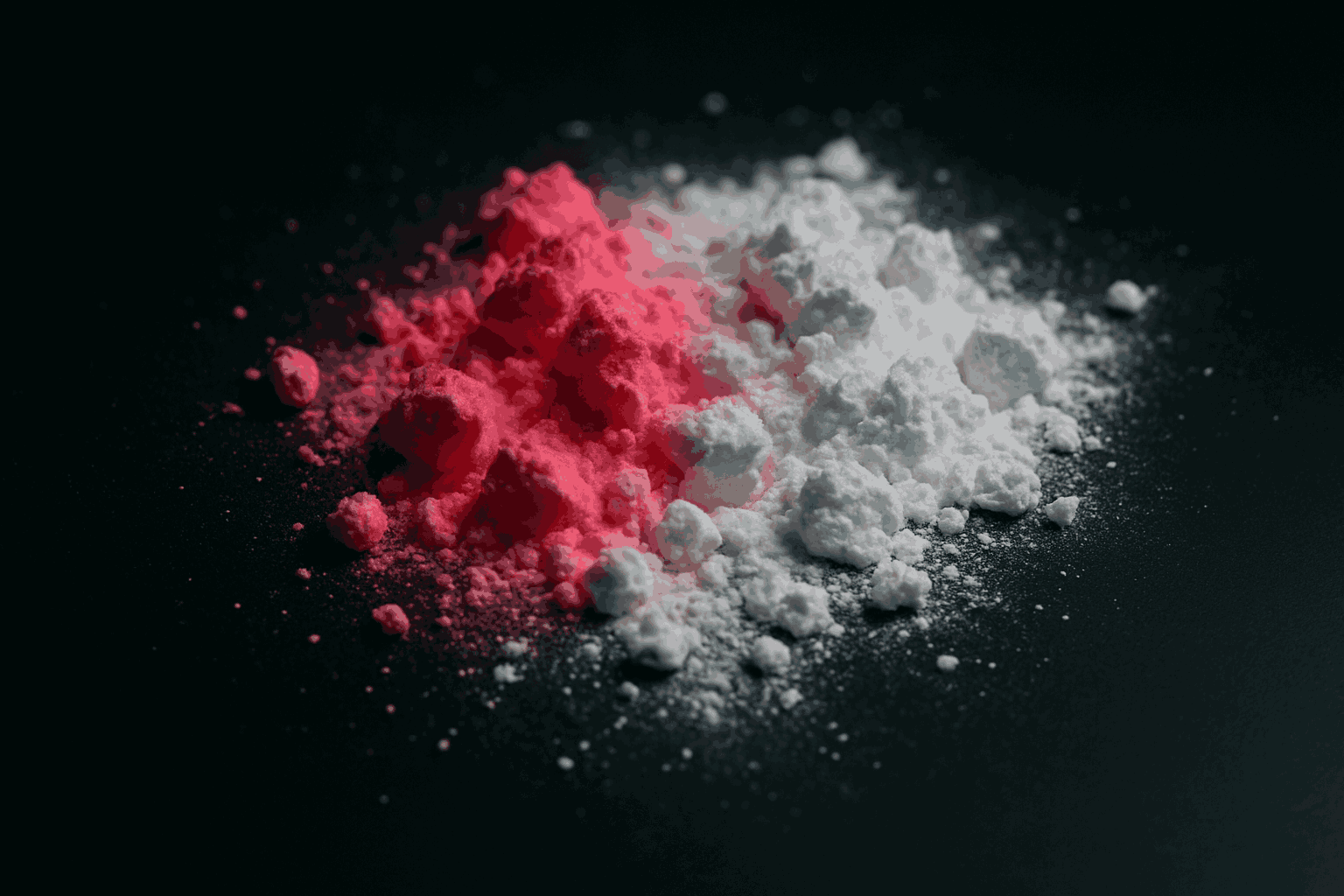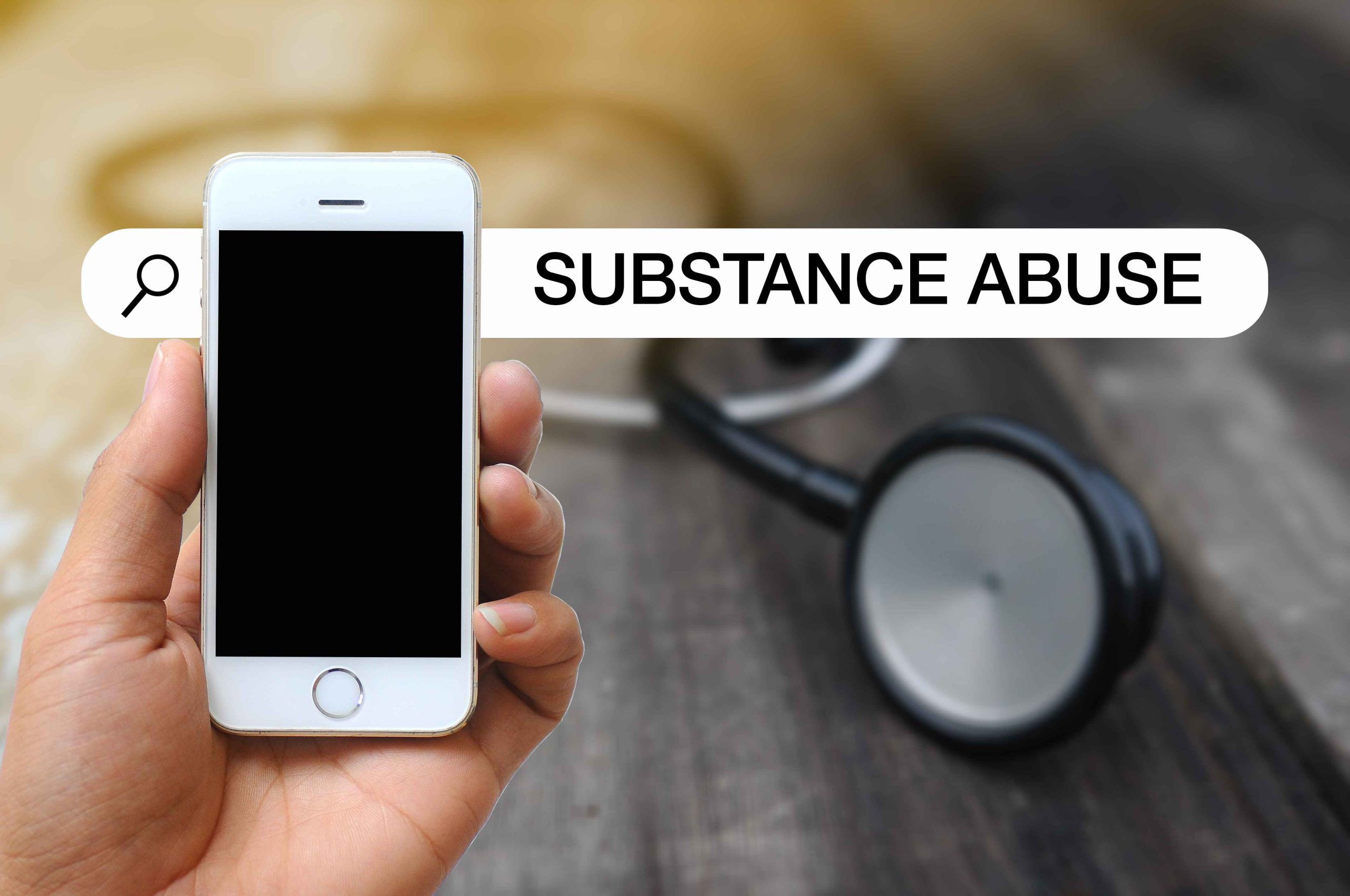Table of Contents
- What Is Pink Cocaine?
- How Is Pink Cocaine Different From Regular Cocaine?
- Is Pink Cocaine Addictive?
- What Are the Effects of Pink Cocaine?
- What Are the Dangers of Pink Cocaine?
- Can You Overdose on Pink Cocaine?
- How Widespread Is Pink Cocaine?
- Why Are We Seeing an Emergence of Pink Cocaine?
- How to Treat a Pink Cocaine Exposure or Overdose
Written by: Meri Sargsyan
Reviewed by: Sareen Khodabakhsh, LMFT
What Is Pink Cocaine?
Most of the time, when you hear the word “cocaine,” you think of a white powder. Pink cocaine, on the other hand, is a newer, more mysterious drug that is growing more popular, especially during parties. This is not regular cocaine that has been dyed pink, even if it says so.
It is a sophisticated and sometimes surprising mix of several illicit substances, such as psychedelics and stimulants. This makes it far more hazardous and hard to detect. Let’s talk about what makes this substance different, what dangers it poses, and what you should do if you or someone you know comes into touch with it.
How Is Pink Cocaine Different From Regular Cocaine?
Let’s talk about what makes this substance different, how dangerous it is, and what to do if you or someone you know comes into contact with it. The biggest difference is in the ingredients.Cocaine is a stimulant derived from the coca plant. Pink cocaine, however, is a synthetic drug cocktail often called “Tuci” or “Tusi.”
To understand the danger, you need to know what Tusi is made of. The stuff is not real cocaine; it’s a mix of drugs like MDMA (ecstasy), ketamine, and other substances. The pink hue isn’t natural; food coloring or dyes are applied to make it seem more appealing. This makes it harder to predict how pink cocaine will affect the user, as they are taking an unpredictable mix of chemicals.
While “Tusi” sounds like “2C,” pink cocaine is not the same as 2C-B. The Tusi meaning is rooted in deception; it’s a marketing term for a dangerous and unpredictable mix. The UN Office on Drugs and Crime confirms that most seized samples contained no 2C-B. This mix of illegal drugs, which can include stimulants and psychedelics, is far more hazardous and unpredictable than regular cocaine.
Is Pink Cocaine Addictive?
Pink cocaine has a lot of the same elements as other drugs, thus it is quite likely to be addictive. MDMA and ketamine, both common parts of tusi, may make you mentally dependent on them. People who use the substance may want to have the extreme euphoric or hallucinogenic experience again and again, which may lead to a need for it.
The physical withdrawal may be different from pure cocaine addiction, but the psychological pull can be just as powerful, which makes it very hard to quit using without expert support.
What Are the Effects of Pink Cocaine?
Pink cocaine effects are different for each dosage because of the different combinations of drugs it contains. People who use it could feel a mix of stimulant, psychedelic, and dissociative effects. Like ecstasy, the tusi drug may make you feel very happy, euphoric, and full of energy. This is why it is so popular during electronic music events. But it may also cause fast and big shifts in mood, going from happiness to extreme anxiety and paranoia very quickly.
Some of these impacts are:
- A lot of happiness and energy:Users frequently want a strong “rush” that is akin to MDMA or other stimulants.
- Hallucinations: changes in vision and hearing that happen a lot with psychedelic drugs like 2C-B (if they are there) or even large dosages of MDMA.
- Dissociatives like ketamine might make you feel like you’re not in your body or in your surroundings.
- Mood swings that happen quickly: From overwhelming happiness to deep worry or paranoia.
- Increased Heart Rate and Blood Pressure: A strong stimulant impact that may put stress on the heart and blood vessels.
- Dilated pupils: A frequent reaction to a lot of stimulants and psychedelics.
The effects of pink cocaine may also persist for different amounts of time. Some sources say they can last anywhere from 30 minutes to 8 hours, depending on the drugs and the amount taken. The dosage and mix of substances may change a lot from batch to batch, so the experience can be anything from pleasantly stimulating to quite overpowering and scary.
What Are the Dangers of Pink Cocaine?
The unpredictable nature of pink powder drug is its greatest danger. Users often don’t know what they’re truly taking, leading to a host of risks:
- Unknown Potency: One batch could contain a modest quantity of a specific substance, while another might have a dangerously large dosage, which might lead to an unintentional overdose.
- Harmful Adulterants: In addition to the primary active chemicals, there may be additional unknown and perhaps harmful compounds mixed in.
- Mixing Effects: When stimulants, psychedelics, and dissociatives are used together, they may have a “push-pull” impact on the body and mind. This can put a lot of stress on the heart and cause a lot of mental pain.
- Mental Health Impact: For those who are already prone to mental health problems, the psychedelic parts might make them worse or start new ones, such psychosis or extreme anxiety.
- Lack of Medical Understanding: Because it has so many different parts, it is quite hard for doctors to treat someone who has been exposed to or overdosed on it. The DEA has warned people about the risks of pink cocaine, pointing out that it is not always safe.
Can You Overdose on Pink Cocaine?
Yes, for sure. Because the drug is unknown, there is a high danger of overdosing. If a batch includes a lot of strong stimulants like MDMA or even fentanyl (which has been discovered in various illegal drug mixes and makes any uncontrolled chemical more dangerous), or too much ketamine, it may be quite dangerous. Signs of an overdose might include:
- Extreme panic or anxiety
- Heart racing and very high blood pressure
- Seizures
- A high body temperature (hyperthermia)
- Trouble breathing
- Not being able to wake up
You need to see a doctor right away if you have these symptoms.
How Widespread Is Pink Cocaine?
Pink cocaine isn’t as common as other illegal narcotics, but it’s becoming more of a problem, especially in portions of Europe, South America, and North America. It became well-known in Colombia and has steadily expanded over the world, commonly showing up in rave culture and among younger people. Reports from America’s Poison Centers have shown that this substance is becoming more common and dangerous.
Why Are We Seeing an Emergence of Pink Cocaine?
- “Designer Drug” Appeal: Its name and color make it appealing, and it is typically sold as a high-end or exclusive party drug, sometimes even as “strawberry cocaine.” The “tusi meaning” has changed to describe this particular mix, which is typically hallucinogenic.
- Ease of Production: Many of its popular ingredients, like ketamine and MDMA, can be made in secret laboratories, which makes it easy for illegal producers to get their hands on.
- Market Innovation: Drug dealers are always looking for new methods to get people to take drugs and avoid being caught by the police. One way to do this is to create new combinations of drugs.
- Perceived Safety: Some people may think that “pink cocaine” is safer or less addictive than “regular” cocaine, which is a deadly error. The name “pink powder drug” is accurate, but it doesn’t explain the hazards that come with it.
How to Treat a Pink Cocaine Exposure or Overdose
It’s very important to know the indicators of pink cocaine exposure or overdose so you can respond quickly. Call emergency authorities right away (911 in the US) if you think someone has taken too much pink cocaine or is experiencing a bad reaction.
This is what therapy usually looks like:
- Immediate Medical Attention: As soon as possible, get medical help. The most important thing is to get to the hospital. If you think someone you know might be using drugs, call 911 and ask them to help them figure out what’s wrong.
- Supportive Care: The medical staff will try to keep the patient’s vital signs stable. Some things that could be done are monitoring the heart rate and blood pressure, stopping seizures, dropping the body temperature, and giving air.
- Sedation: Benzodiazepines, such as Valium or Ativan, may be given to calm someone down, lower their nervousness, and stop seizures if they are having insanity or too much restlessness caused by stimulants.
- Monitoring: It is very important to always keep an eye on the heart rate, breathing, and mental state.
- Harm Reduction: It’s very important to put people who have survived an accident or a dangerous situation in touch with drug treatment programs and other support groups. You could start by reading our guide on how to find help for addiction.
Keep in mind that pink cocaine is unpredictable, so every time someone uses it or overdoses on it, it’s a different medical problem. The only way to protect yourself from this deadly new drug trend is to be aware of it and act quickly.
Sources:
Palamar J. J. (2023). Tusi: a new ketamine concoction complicating the drug landscape. The American journal of drug and alcohol abuse, 49(5), 546–550. https://doi.org/10.1080/00952990.2023.2207716
U.S. Drug Enforcement Administration. (n.d.). Pink cocaine. DEA. Retrieved October 27, 2025, from https://www.dea.gov/pink-cocaine









